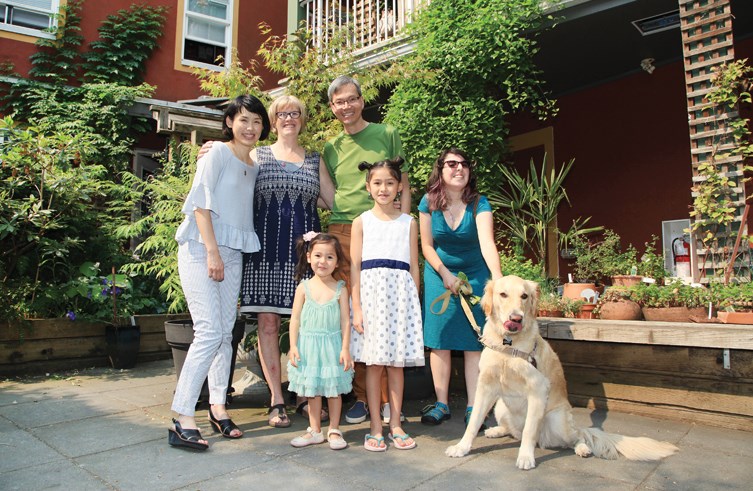Do you take the money or go for the house?
That was the conundrum in the City of North Vancouver recently as council turned down $864,000 in cash in favour of a development that includes seven homes to be sold at 25 per cent below market value.
The debate was part of a wider ranging discussion about a 27-unit, five-storey co-housing development pencilled in for three lots on the 2100 block of Chesterfield Avenue between West 21st and 23rd streets.
The project’s 1.88 floor space ratio – which measures a development’s total floor space against its lot size – would ordinarily result in the developer paying a community amenity contribution.
However, instead of cash, the Driftwood Village Cohousing is proposing to include four three-bedroom units and three two-bedroom units for 25 per cent below market rates in perpetuity.
The asking price would drop from approximately $560,000 to $420,000 on a two-bedroom unit, making the home a viable option for buyers with an annual income of $93,000, according to Driftwood. Three-bedroom units would likely sell for about $558,000, down from about $745,000.
City taxpayers shouldn’t fund excess density for buyers earning in the neighbourhood of $100,000 a year, concluded Coun. Rod Clark. “I represent everybody. I represent the lady who flips the hot dogs at 7-Eleven as well as the doctors and lawyers,” he said.
Coun. Don Bell concurred, suggesting the “real meat” is for housing for low- and moderate-income earners.
“I’d rather see monies at this time put into that area than into trying to increase affordability for seven people.”
A city staff report noted the benefit “would only help to fund the development of seven units, all of which would be assigned to members of the Driftwood.”
Even middle-income earners are “extremely challenged” to live in the City of North Vancouver these days, countered Coun. Linda Buchanan.
Her argument was buttressed by the staff report, which stated that without senior levels of government lending a hand in the housing market, “relatively high-income families are struggling to afford to live in the city.”
Council would do residents a disservice by taking the money and socking it away in the affordable housing reserve fund, according to Buchanan.
“It will never deliver us today, or in two years, seven units where people can purchase them for 25 per cent below market.”
Mayor Darrell Mussatto agreed, emphasizing that the seven homes in question would be passed on to future generations.
Coun. Pam Bookham differed, suggesting the city has no capacity to manage the seven units. “It’s not a role that I think the city can play,” she said.
The municipality of Whistler “does it just fine,” countered Coun. Craig Keating. Keating decried what he called “Goldilocks informed” debates about affordability.
“In the midst of the worst affordable housing crisis this region and this province has ever seen ... we have the most strained arguments about why we just can’t support it at this time,” he said. “The fact of the matter is we can do it.”
Council should support the unique project, according to Coun. Holly Back, who suggested it would offer a boost for future homeowners.
“It’s just one stepping stone into owning your own home,” she said.
Council voted 4-3 in support of the proposal with Couns. Bell, Bookham and Clark opposed. Council is set to revisit the proposal following the August break.
For Driftwood co-founder Mackenzie Stonehocker, the vote was encouraging.
“It looks like they were happy with the idea, for the most part,” she said.
After hiring a real estate agent in 2016, Driftwood has been shopping for a site that was: “walkable and bikable to schools and services and transit,” Stonehocker said.
The Chesterfield site, with its proximity to schools, Wagg Creek Park, Lonsdale Avenue, and the Green Necklace, is a perfect fit for young families and downsizing baby boomers, according to Stonehocker.
“It’s such a good option for an expensive real estate market because the families and couples in our project are able to live in a smaller, private unit,” she said.
If council approves the project, Stonehocker is hoping families will move in by 2020.
“Having my kids grow up in community is a prime reason for doing co-housing,” she said. “It gives everyone a little bit more of a support network so that if you have to come home from work early for a sick kid, someone else may be there to help you out.”
While the legal structure is similar to a strata, the proposal includes approximately 2,800 square feet of shared space including a kitchen, play area, and guest suite. Units in the development range from 750 to 1,500 square feet.



